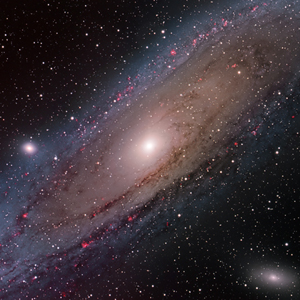The wonder of late Victorian and early 20th century women explorers increases with time. How did they do it, lacking jeans, tampax and antibiotics? Dorothea Bate, the paleontologist and ornithologist who is the subject of Karolyn Shindler's fine biography, excavated caves in Cyprus, Crete and the Wye Valley, wearing long skirts and carrying a collecting box, sunshade and gun.
The sheer physical struggle to pack fossil bones and teeth (some still embedded in rock) and ship them back to South Kensington looks heroic. So does the determination to seek financial support and status at a time when single women were expected to remain at home and look after their parents.
Gaining a commission from the new Natural History Museum, opened in 1881 as an offshoot of the British Museum, was a considerable achievement for Bate, born in 1878. Self-taught in geology and ornithology, she walked into the museum one day when she was just under twenty, asked for a job and got it. Not that women were completely shut out of archaeology. It was just that the men preferred that women worked together and out of their sight. When Bate was hired, no woman was employed in any scientific capacity in the museum.
Bate's ambition grew from a childhood spent in Camarthen and the Forest of Dean, where she explored fields and caves and became fascinated with the fact that bones and fossils were not just treasures in themselves but evidence of geological history. She decided to devote her life to excavating and classifying her finds.
At 22, invited by family friends to join them in Cyprus (her family did not approve of her travelling unchaperoned), Bate discovered bone sites with fossils of pygmy elephants and hippos. Her wardrobe problems were compounded by the need to participate in the theatricals and social gatherings of the High Commissioner in Nicosia. She did not mind. A personable young woman of some charm, she enjoyed finding her way around the various restrictions on the export of antiquities.
She went on to work in Crete, the Ballearic Isles, the Wye Valley and Scotland. Her speciality was the Pleistocene period ' the Ice Age ' which preceded our own. The museum's Keeper of Geology, Arthur (later Sir) Smith Woodward, recognised her ability and worked to get her grants from the Royal Society to continue her expeditions, which yielded such bounty for his collections. Her gift was not only for discovery but for interpreting, from fragments of bone, the climate and environment in which the creatures she found had lived. Some, she discerned, had been domestic animals, used in the practice of agriculture.
By 1915, her record of discoveries was such that Henry Woodward, a trustee of a fund that had supported her, wrote to her of his vision: 'Only imagine the sensation you would make if you could walk down Piccadilly leading by a string your Pigmy Elephants, Hippopotami, Myotragus, Tortoises etc etc all in one long queue, the little Elephant blowing his trumpet, and the Hippopotamus wagging its tail.' (Her biographer adds that the procession might also have included all the unique squirrel-sized mice, voles, and shrews she had discovered.)
In 1915 Bate became a Christian Scientist, for reasons unknown but which her nephew suspected were connected to the shock of being disinherited by her parents in favour of her brother. Of illnesses, she had plenty, both during her travels (she suffered violently from sea-sickness) and at home.
Her career progressed, always under the friendly gaze of the Natural History Museum. In 1926, invited to Palestine, she excavated a cave on the northwest shores of the sea of Galilee. Field Marshall Lord Allenby considered that it was a duty incumbent on Britain, entrusted with the mandate for Palestine, to explore its antiquities. She moved on to excavations on Mount Carmel. The British Museum itself held a special exhibition to display her finds. In 1946, at the age of 68, she was invited to a conference in Nairobi and met Louis and Mary Leakey with whom she had an adventurous expedition to the Olduvai Gorge.
This biography is as much a history of archaeology and geology as of one intrepid woman. Schindler traces clearly the progress of knowledge from the era when the accepted view of the age of the planet changed from 6,000 to several million years. (It is, in fact, 4.6 billion.) It is also the story of the quest for the origins of Man and the zeal of archaeologists which led to the hoax of the Piltdown Man. This fabricated fossil, planted, then 'found' in gravel beds in Sussex, was considered, in 1912, to be one of the most momentous discoveries ever associated with the Natural History Museum.
In 1948 Bate was made officer in charge of the Tring Museum in Hertfordshire, an outpost where the Natural History Museum's collections had been evacuated during World War Two. She died of cancer in 1951, attended by her Christian Science healer. Her late award of formal status at the museum is one more piece of evidence (if more were needed) of the geological slowness of the acceptance of the idea that women are equal to men. When she received her promotion, her salary was set at '525 a year; her predecessor got '1,000 for the same job.

